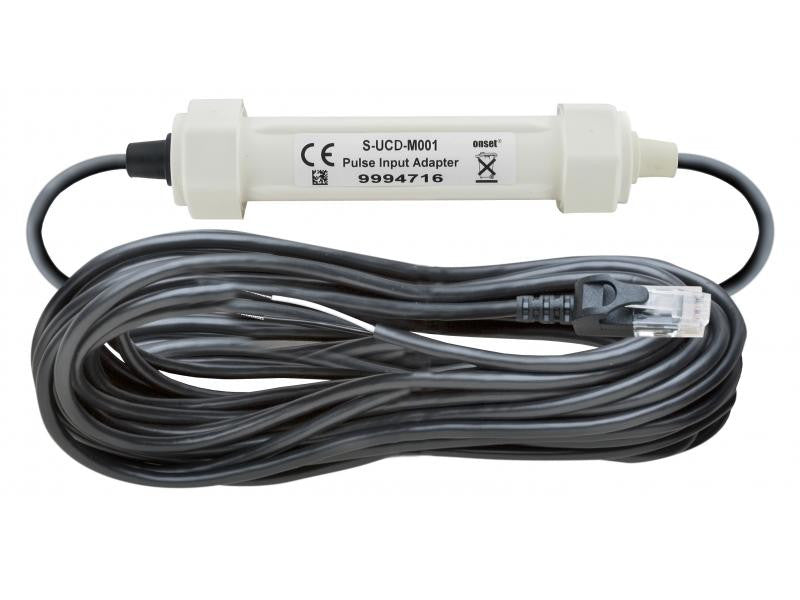Contact Closure Pulse Input Adapter - Sensor
Contact Closure Pulse Input Adapter - Sensor - 1 m is backordered and will ship as soon as it is back in stock.
Couldn't load pickup availability
Description
Description
Important Info
Overview
The Contact Closure Pulse Input Adapter connects sensors with pulse outputs to data loggers with smart-sensor inputs. This smart sensor is compatible with contact closures, such as tipping-bucket rain gauges or reed switches with a maximum input frequency of 2 Hz (2 pulses per second), and a preferred switch-type of normally-open. See how the pulse recorder works.
Highlighted Features
- Plug-n-play adapter for pulse output sensors
- Automatically recognized by H21, H22, U30, and ZW data loggers
- Compatible with contact closures, such as tipping-bucket rain gauges or reed switches with a maximum input frequency of 2 Hz (2 pulses per second)
In what environment does this sensor operate?
This sensor operates in indoor and outdoor environments.
What measurements does this sensor support?
The S-UCD-M001 sensor supports the following measurements: Pulse Input and Water Flow
Specifications
| Maximum input frequency: | 2 Hz (2 pulses per second) |
| Measurement range: | 0 "€œ 65,533 pulses per logging interval |
| Resolution : | 1 pulse |
| Lockout time: | 327 ms ± 10% |
| Recommended input type: | Mechanical contact closure (example: reed switch in a tipping-bucket rain gauge) |
| Preferred switch state: | Active low input Normally open |
| Edge detection: | Falling edge, Schmitt Trigger buffer (logic levels: low €°¤ 0.6 V, high €°¥ 2.7 V) |
| Minimum pulse width: | 1 ms |
| Input/output impedance: | 100 K© |
| Open circuit input voltage: | 3.3 V |
| Maximum input voltage: | 3.6 V |
| User connection: | 24 AWG wires, 2 leads: white(+), black(-) |
| Operating temperature range: | -40° to 75°C (-40° to 167°F) |
| Overall cable length: | 1 m (3.3 ft.), 6.5 m (21 ft.) |
| Housing: | Weatherproof PVC housing protects input adapter electronics |
| Housing dimensions: | 14 x 0.95 cm (5.5 x 0.375 in.) |
| Weight: | 310 g (11 oz.) |
| Bits per sample: | 16 |
| Number of data channels: | 1 |
| Measurement averaging option: | No (reports the number of pulses over the logging interval) |
Payment & Security
Payment methods
Your payment information is processed securely. We do not store credit card details nor have access to your credit card information.




